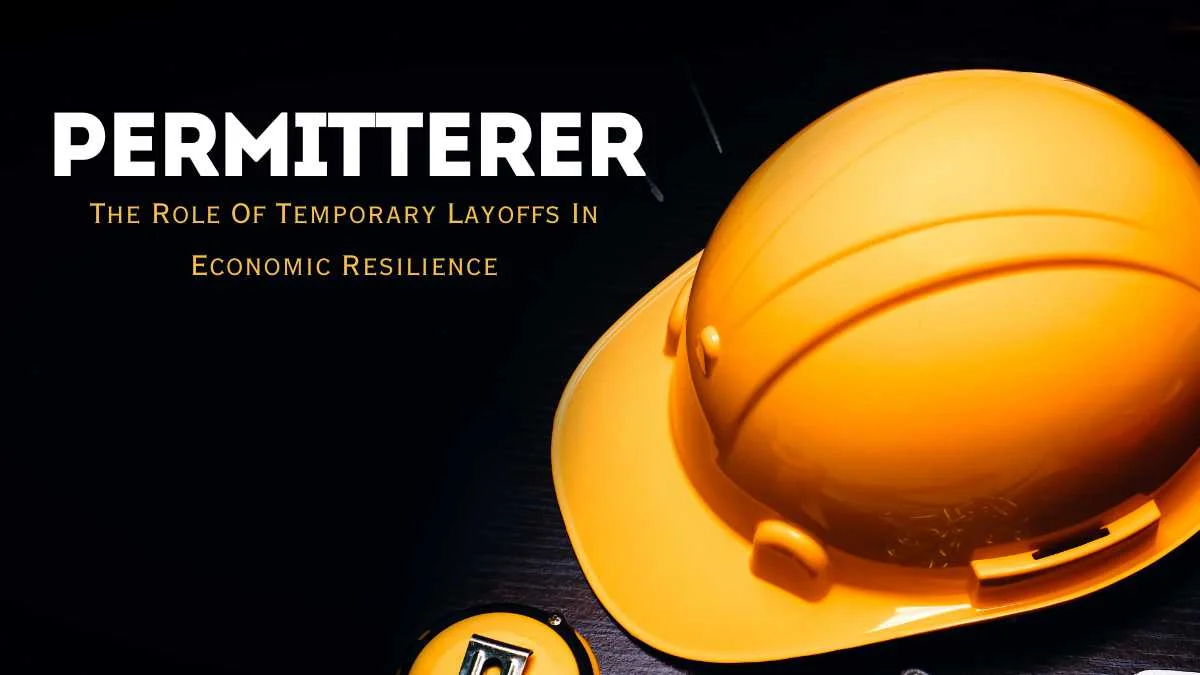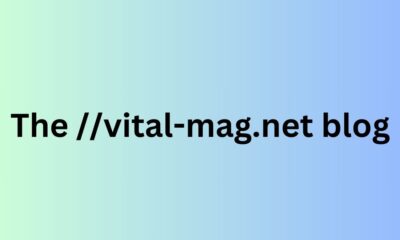GENERAL
Permitterer: A Strategic Approach to Temporary Layoffs

During an economic downturn, companies must contend with difficult choices regarding their employees. A single idea that has become increasingly prominent, at least over the last few years, is permitterer, a regime of temporary layoffs or furloughs intended to trim labor costs and retain skilled workers. It is unlike permanent terminations, retains the employer-employee relationship, providing an organization with greater flexibility and workers with a route back should conditions improve.
What is permitterer?
A permitterer refers to an employer or organization that temporarily lays off workers without severing the employment relationship. Unlike permanent termination, permitting is a legal mechanism that allows companies to reduce their workforce temporarily due to financial constraints, operational disruptions, or external market forces. During the permitting period, the employee is relieved of their duty to work, and the employer is temporarily exempt from paying wages. However, the employment contract remains intact, and the employee is typically entitled to reinstatement when normal operations resume.
The Mechanics of Permitterer: How It Works
A permitterer arrangement typically arises when a company anticipates short- to mid-term slowdowns due to economic, seasonal, or operational factors. Employers temporarily reduce employees’ work hours, furlough them for specific periods, or alternate work schedules.
Common triggers
- Declining demand
- Seasonal slumps
- Supply chain interruptions
- Economic recessions
- Public health emergencies
Permitterer may involve
- Full-time furloughs: Employees do not work at all but retain employment status.
- Reduced hours: Employees work fewer hours with partial pay.
- Rolling furloughs: Affected staff alternate workweeks or shifts.
Historical Context: Permitterer Before and During COVID-19
Although the concept of permitterer did not emerge recently, the COVID-19 pandemic made it become central to operations since many businesses had to shut down or reduce their operations. To avoid massive unemployment, governments have increased furlough schemes to cushion both employers and employees. Kurzarbeit of Germany offered shorter working hours with wage compensations, Canada offered up to 75 percent working wages through CEWS, and the Job Retention Scheme of the UK paid 80 percent of furloughed wages. These trials demonstrated that permitterer systems can stabilize the labor markets and improving post-crisis economic recovery.
Benefits
For businesses, permitterer schemes provide strategic advantages, particularly during financial distress.
- Retaining skilled talent: Avoids rehiring and retraining costs post-recovery.
- Cost-effective payroll control: Cuts labor costs without severance packages or permanent loss.
- Reputational value: Demonstrates commitment to employees during hard times.
- Operational flexibility: Allows businesses to quickly adapt to changing market conditions without full restructuring.
Employee Rights During Permitterer Periods
Staff subjected to permitterer arrangements have certain rights and protection, which differ depending on the country and labor agreement. Usually, employees are entitled to reinstatement when work resumes, thereby maintaining their employment. The employer, the government, or both may also partially cover the wages of these people. Furlough benefits, such as healthcare, pension, and paid leave, are frequently maintained during the furlough. Advance notice by employers is required in most areas, and union consultation at workplaces is required by collective agreements.
Government Support Mechanisms
To make permitterer schemes viable, government intervention is often crucial. Support includes
| Support Type | Description | Example Countries |
| Wage Subsidies | The government pays a percentage of wages during furlough. | UK (Job Retention Scheme), Germany (Kurzarbeit), Canada |
| Unemployment Benefits | Employees receive income replacement during furlough. | France, Norway, United States |
| Training Programs | Government-funded reskilling via digital platforms or in-person courses. | EU (Pact for Skills), Singapore (SkillsFuture) |
| Social Security Coverage | Ensure healthcare and pensions continue during furlough. | Germany, Canada, UK |
| Job Matching Services | Career counseling and job search platforms for furloughed workers. | Australia, Sweden |
Legal and Compliance Requirements
Employers face a spectrum of legal requirements when introducing permitterer plans and need to tread carefully to avoid breaches and possible claims against their business, as well as the employment of their workers. Temporary layoffs and their period are frequently stipulated in labor laws. Collective bargaining contracts sometimes involve further measures, like consultation or consent of employees, in unionized environments.
Frequently, written notification of employees is required before furlough commences. Furthermore, proper and careful documentation is also vital, particularly in case employers require government subsidies or expect an audit in the future. Such legal checks will ensure transparency and accountability in the permitterer process.
Challenges in Implementing Permitterer
Despite its advantages, permitterer programs aren’t without drawbacks:
- Administrative complexity: Coordinating benefits, compliance, and legal documentation can be overwhelming.
- Exclusion gaps: Gig workers, freelancers, and informal sector employees often miss out.
- Potential misuse: Some employers may exploit furloughs to shift costs without real intent to rehire.
- Communication failures: Lack of transparency can erode trust and engagement.
The Future
With businesses contracting to adapt to the changing global environment, such as climate risks, automation, and economic shocks, permitterer systems could constitute a fundamental part of workforce strategy. Future versions might be hybridized into remote working policies, AI-driven scheduling, and universal social safety nets.
Conclusion
Permitterer programs provide a middle ground between economic need and social responsibility. They allow companies to weather economic crises without laying off employees, and they assist employees in enduring short-term hard times without breaking job bonds. The sheer popularity of Temporary layoffs during the COVID-19 pandemic demonstrated that temporary layoffs, when combined with government help, can stabilize economies, limit unemployment, and speed recovery. The permitterer model will continue to serve as a significant tool of resilience as we plan to tackle upcoming disruptions.
-

 BIOGRAPHY7 months ago
BIOGRAPHY7 months agoBehind the Scenes with Sandra Orlow: An Exclusive Interview
-

 HOME1 year ago
HOME1 year agoDiscovering Insights: A Deep Dive into the //vital-mag.net blog
-

 HOME1 year ago
HOME1 year agoSifangds in Action: Real-Life Applications and Success Stories
-

 BIOGRAPHY1 year ago
BIOGRAPHY1 year agoThe Woman Behind the Comedian: Meet Andrew Santino Wife




























